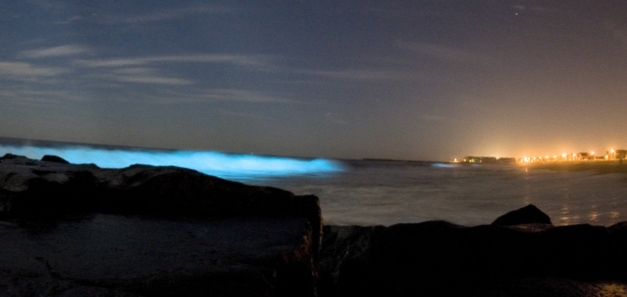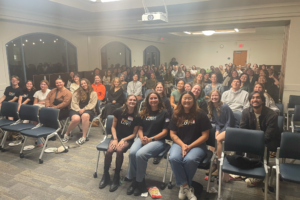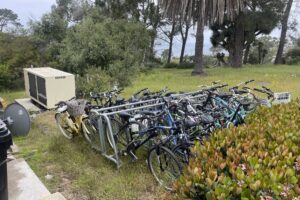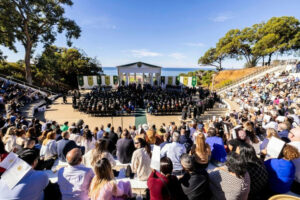The bioluminescence phenomenon returned to San Diego’s beaches on Sept. 3, and stayed near San Diego’s shores for about two weeks. During this time, Point Loma Nazarene University students visited the nearby shores and stumbled upon the natural spectacle.
From a distance, bioluminescent waves appear to be one combined supernatural glowing body; however, in reality, it is the work of millions of phytoplankton reacting to their environment.
Professor of Marine Biology Walter Cho gave further insight into how these waves occur.
“Bioluminescence in the ocean is caused by the same kind of reaction that occurs on fireflies at night. It’s chemical reactions within the organism that are producing light,” Cho said.
“They usually emit that light in response to some kind of disturbance, that’s why you typically see it in crashing waves.”
Cho shared that the specific type of phytoplankton that is responsible for the bioluminescence in San Diego is called a dinoflagellate, which is too small to see with the human eye. Although it is impossible to see these organisms standing alone, when they are densely concentrated people on the shore can witness the glowing waves, according to Cho.
The first sign that these types of waves are back in town is a darker, reddish, brown color of the water known as a red tide, or harmful algal blooms
“They [algal blooms] are harmful because they have toxins within them that can be harmful for vertebrates. Mussels and filter feeders will eat these algae and they can become concentrated into their tissue,” said Cho. “It is not harmful to the mussel because they are invertebrates, but when they are collected and eaten by a bird, a mammal, or a human, then if the concentration is large enough it could be threatening to health.”
Cho clarified that while algae can be harmful if consumed in large quantities, activities such as surfing and swimming in it pose no immediate or direct threats to your health.
Students like Dylan Maguire, second-year media communications major, and Gavin Pike, second-year environmental studies major, surfed in the bioluminescent waves in Pacific Beach, just 7.5 miles away from campus.
For both students, this was an entirely new experience and one they hadn’t expected before paddling out. Pike said that when they first paddled out, they were surfing underneath a flood light so that they were able to see the waves in the dark. However, when he paddled further out, he discovered that he could see the bioluminescence on the parts of the water where the flood light wasn’t hitting.
“I looked down at my hand and my hand was glowing and I was like ‘What? No way, it’s the bioluminescence.’ And then everyone paddled out and we surfed for another hour,” said Pike. “The water was really warm and it was glowing. It was a great time.”
Professor Cho shared that many times the bioluminescence could be occurring right in front of you, but you may not be able to see it because of the surrounding artificial lights. This is one of the reasons Pike and Maguire were unable to see the bioluminescence at first glance.
“It’s easiest to see in really dark beaches. It will be more apparent at isolated beaches where there is less light pollution,” said Cho.
Maguire also shared his personal experience of surfing these waves and the rarity of being able to see his surroundings despite it being the middle of the night.
“The waves were good that day too, so it was a lot of fun to surf and being able to see the waves while we were standing up in the dark was an immaculate experience. I had never seen anything like that before,” Maguire said.
If given the chance to relive this experience, Maguire and Pike said they would do it again.
“I would recommend that people go and surf whenever they hear the water has bioluminescence again,” said Pike.









